Chapter 5: Basic Microsurgical/Microvascular/Skull Base Instrumentation Scissors, Knives, Needle Holders Alternative Names: Mallet, hammer Category: General Purposes: Used for application of force, usually on another instrument, e.g., osteotome, bone graft impactor, chisel, etc. Varieties: Variable weights. Variable material of mallet and handle. Alternative Names: Fukishima, variable suction, regulated suction tip Category: General Purposes: Used for suction of fluids in confined spaces. Teardrop-shaped thumb hole allows regulated style of suction. Also used as a retractor, protection device, and blunt dissection tool when removing tumor or brain parenchyma. Varieties: Straight or angled. Various diameters of tips. Alternative Names: Yasargil micro scissors, micro scissors Category: Scissors Purposes: Used for cutting delicate soft tissue in confined spaces. Also used for micro dissection of arachnoid bands and adhesions in deep cranial and spinal cases. Varieties: Straight, curved, or angled blades. Various lengths of arms. Alternative Names: Lexer-Baby, Bonn, Kelly, iris scissors, micro dissecting scissors Category: Scissors Purposes: Useful for cutting very fine, delicate tissue, including vessels. Can be used to extend arteriotomies, isolate bypass grafts, etc. Varieties: Straight or curved blades. Various arm lengths. Alternative Names: Jameson-Potts, Jamison-Metz, Jamison-Reynolds, tenotomies, long iris scissors Category: Scissors Purposes: Useful for cutting very fine, delicate tissue, including vessels. Can be used to extend arteriotomies, to isolate bypass grafts, in pediatric cases, etc. Varieties: Straight or curved blades. Various arm lengths. Alternative Names: Lexer-Baby, Bonn, Kelly, iris scissors, micro dissecting scissors Category: Scissors Purposes: Useful for cutting very fine, delicate tissue, including vessels. Can be used to extend arteriotomies, to isolate bypass grafts, in pediatric cases, etc. Varieties: Straight or curved blades. Various arm lengths. Alternative Names: Potts scissors, Potts-Smith, angled scissors, vascular scissors Category: Scissors Purposes: Used for cutting vessels, e.g., extending an arteriotomy or venotomy. Can also be used to cut fine, delicate tissue in deep, closed spaces, e.g., to extend dural opening in intramedullary spine or peripheral nerve cases. Varieties: Variable instrument lengths. Variable blade lengths and angles. Alternative Names: Hoyes micro scissors, Westcott scissors, micro scissors Category: Scissors Purposes: Used for cutting delicate soft tissue in confined spaces. Also used for micro dissection of arachnoid bands and adhesions in deep cranial and spinal cases. Varieties: Straight, curved, or angled blades. Various lengths of arms. Alternative Names: Bayonet scissors, aneurysm scissors Category: Scissors Purposes: Used for cutting delicate soft tissue in confined spaces. Also used for gross removal of large tumors or initial cuts in giant aneurysm sacs. Varieties: Straight, curved, or angled blades. Various lengths of arms. Alternative Names: Micro scissors, bayonet micro scissors Category: Scissors Purposes: Used for cutting delicate soft tissue in confined spaces. Also used for micro dissection of arachnoid bands and adhesions in deep cranial and spinal cases. Varieties: Straight, curved, or angled blades. Various lengths of arms. Alternative Name: Beaver blade Category: Knives Purposes: Used to isolate aneurysmal lesion from the parent circulation. Can also be used to ligate bleeding vessels unable to be cauterized, e.g., AVM cases or fistulous lesions, or for temporary occlusion of larger vessels during revascularization procedures, endarterectomies, and tumor resections. For aneurysms, clips can be loaded in various positions, e.g., curve down, angle up, legs up, etc. Newer appliers have adjustable, flexible, or rotating ends, making virtually all clip positions possible. A review of all available systems is beyond the scope of this guide. Varieties: Infinite. Straight, curved, angled, fenestrated, bayoneted, mini, temporary, and any combination of the above. Several new materials and alloys have been recently introduced. Opening/closing mechanism is also variable. The standard spring compression is demonstrated here. Please see manufacturer’s information guide for more specific mechanics of utilized system. Alternative Name: None Category: Knives Purposes: Used for fine dissection or cutting of delicate tissues. Useful in dissecting aneurysmal or other vascular lesions and adherent tumors, or in generalized sharp dissection. A sleeve is pulled over the blade for protection, given its delicate nature. Varieties: Variable types of handles. Triangular or square diamond blades. Alternative Names: Micro needle holder, micro locking needle holder Category: Needle holders Purposes: Microsurgical needle holder with locking mechanism reducing pressure required to hold needle. Spring-like opening of jaws when not locked. Used most commonly for microsuturing. Varieties: Straight or curved jaws. Rounded and flat side arms. Alternative Names: Barraquer needle holder, Patton needle holder, Sklar micro needle holder, micro needle driver Category: Needle holders Purposes: Non-locking needle holder used for holding and manipulating small needles and suture in confined spaces. Most often used in microvascular, peripheral nerve, and intradural cases. Varieties: Various lengths of arms. Various sizes of jaws. Alternative Names: Bayonet needle holder, bayonet micro needle holder Category: Needle holders Purposes: Non-locking bayonet needle holder used for holding and manipulating small needles and sutures in confined spaces. Most often used in microvascular, intradural, and peripheral nerve/re-anastomoses cases. Varieties: Various lengths of arms. Various sizes of jaws. Alternative Names: Pickups without teeth, Gerald without, Cushing forceps (incorrect) Category: Forceps Purposes: Non-traumatic grasping and holding forceps designed for very delicate tissue or vessels. Can be used to hold vessels or open the vessel lumen. Can also be used for handling tubing and other surgical implants and their cables. Alternative Names: Jewelers, micro forceps Category: Forceps Purposes: Used to grasp and manipulate fine, delicate tissue, e.g., nerve or vessels, or as a micro-needle holder. Often used in microvascular, intradural, and peripheral nerve/re-anastomosis procedures. Varieties: Straight or curved tips. Various lengths of arms. Alternative Names: Round jeweler’s forceps, round micro forceps Category: Forceps Purposes: Used for grasping and manipulating fine, delicate tissue, e.g., nerve or vessels, or as a micro-needle holder. Often used in microvascular, intradural spine, and peripheral nerve/re-anastomosis procedures. Round shaft allows rotation of instrument. Varieties: Straight or curved tips. Various lengths of arms. Alternative Names: Cushing bipolars, Rhoton forceps, Malis bipolars, bayonet, bipolar forceps, bipolars Category: Forceps Purposes: Coagulation of tissue between the tips of the forceps, which must be in close contact to allow current to flow through tissue. Variable current allows highly tailored effectiveness. Can be used as a dissection instrument or for general grasping of delicate tissue. Varieties: Straight, curved, or angled tips. Insulated tips or not. Irrigating or not. Short and long. Blunt or fine tips. Alternative Names: Straight Cushing bipolars, straight Rhoton forceps, straight Malis bipolars, straight bipolar forceps, straight bipolars Category: Forceps Purposes: Coagulation of tissue between the tips of the forceps, which must be in close contact to allow current to flow through tissue. Variable current allows highly tailored effectiveness. Can be used as a dissection instrument or for general grasping of delicate tissue. Varieties: Insulated tips or not. Short and long. Blunt or fine tips. Alternative Names: DeBakey clamp, carotid clamp, bulldog clamp, angled clamp Category: Clamps Purposes: Used for temporary occlusion of large blood vessels. Most commonly used for common carotid artery occlusion during endarterectomies, intraoperative internal carotid artery access, etc. Alternative Names: Right angle, right angle hemostat, right angle snap, right angle Adson clamp, right angle Crile clamp Category: Clamps Purposes: Used for dissecting and isolating delicate soft tissues, especially around vessels and nerves. Often used to grasp tying sutures to pull them underneath these structures in preparation for ligation. Also used for dissecting tissue underneath or around structures. Varieties: Variable lengths of arms and handles. Alternative Names: Vein retractor, Cushing retractor, Sachs retractor Category: Retractors Purposes: Retraction, lifting, or isolation of delicate soft tissue and vessels. Varieties: Solid or fenestrated blade. Variably sized end. Alternative Names: Dural hook, dural elevator, micro hook, Adson hook, Fisch hook (incorrect) Category: Retractors Purposes: Used for retraction and sharp dissection of fine, delicate soft tissue. Most often used to elevate tissues, especially dura. Very sharp and should be handled and exchanged with care. Alternative Names: Mayo-Adams retractor, cervical retractor Category: Retractors Purposes: Used for retraction of skin and soft tissues to allow for improved visualization. Used most commonly in cervical spine exposures, but can be used in any small exposure. Varieties: Sharp or blunt blades. Various lengths, widths, and number of teeth on the blades. Alternative Names: Fixation base, snake holder, snake charmer Category: Retractors Purposes: Fits on the end of the Leyla bar and allows the attachment of one to three flexible arms. Varieties: Number of attachment sites for flexible arms. Alternative Names: Fixation base, snake holder, snake charmer Category: Retractors Purposes: Fits on the end of the Leyla bar and allows the attachment of one to three flexible arms. Varieties: Number of attachment sites for flexible arms.
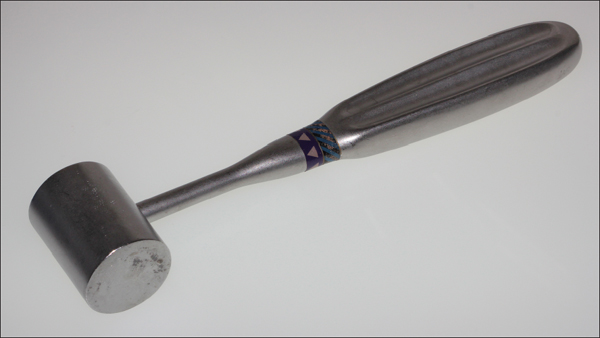
Cottle Mallet
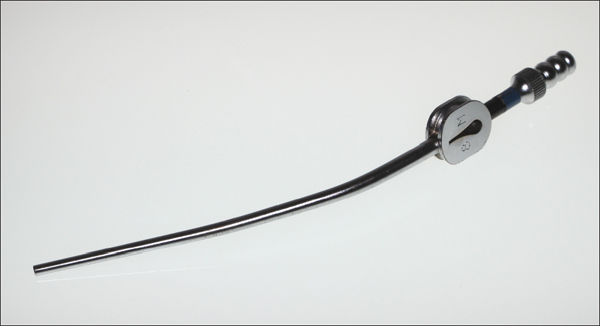
Japanese Suction
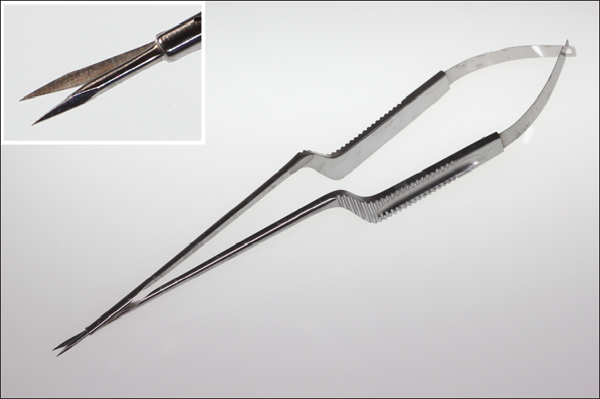
Bayonet Micro Scissors
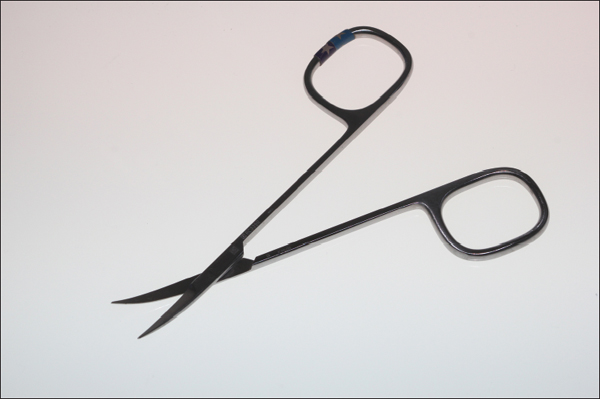
Ins Scissors
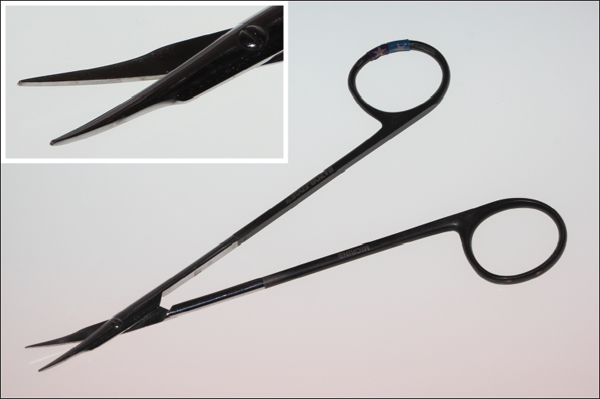
Jameson Tenotomy Scissors
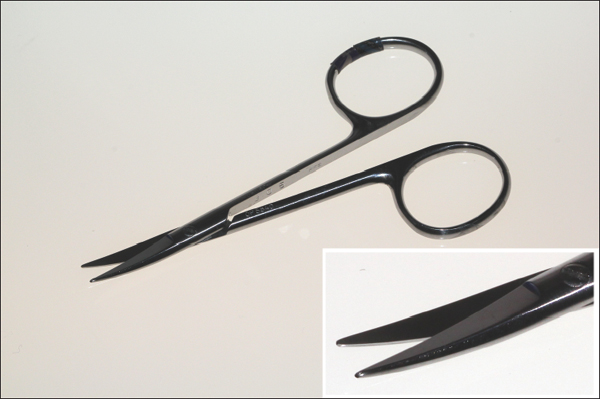
Knapp Iris Scissors
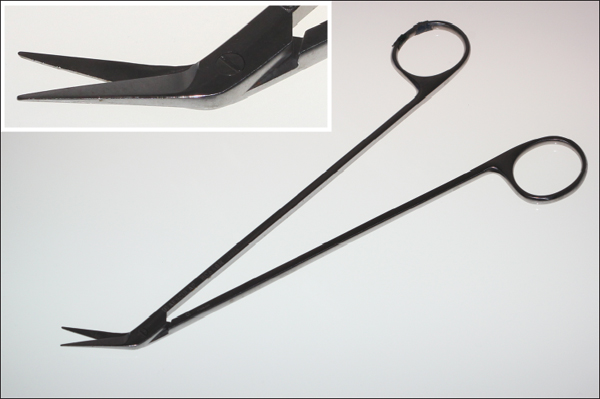
Potts-DeMartel Scissors
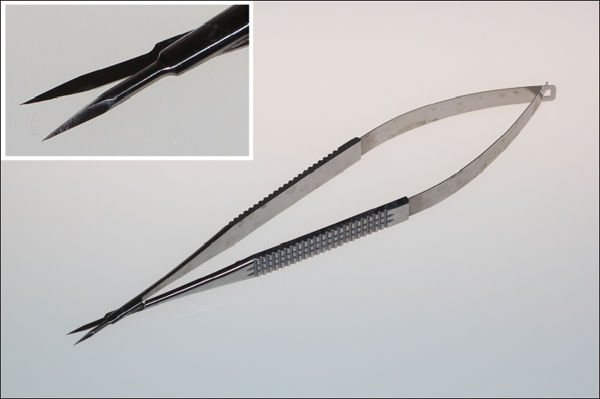
Vannas Micro Scissors
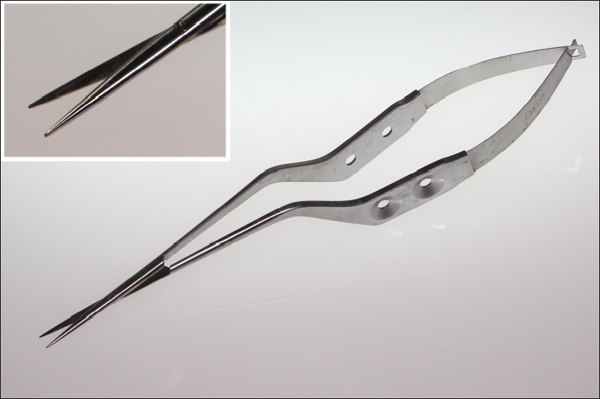
Yasargil Bayonet Scissors
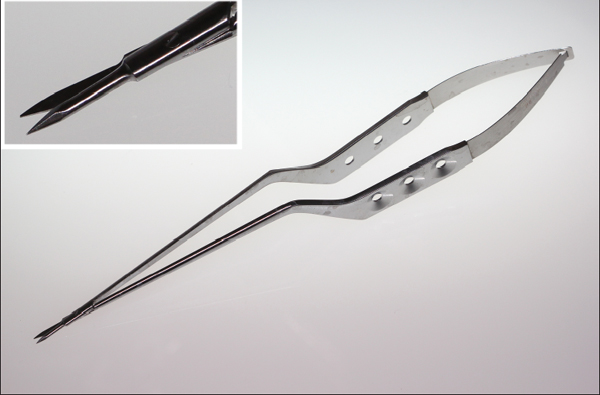
Yasargil Bayonet Micro Scissors
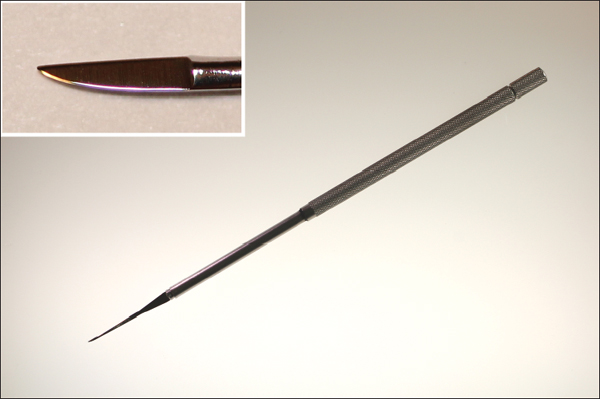
Arachnoid Knife
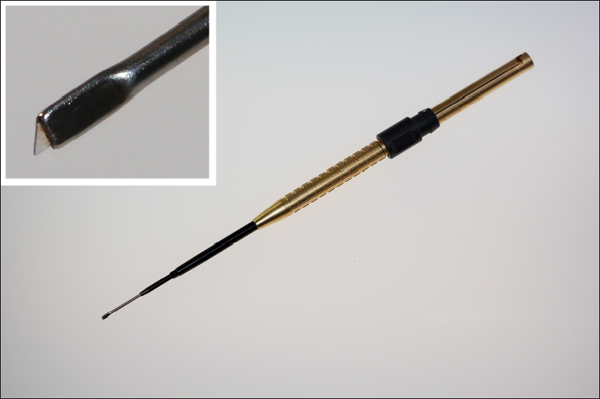
Diamond Knife
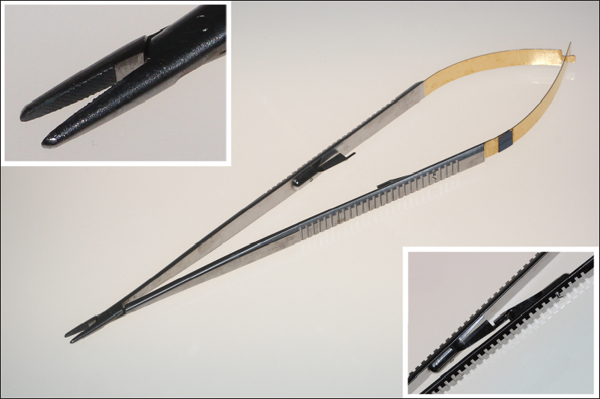
Castroviejo Needle Holder
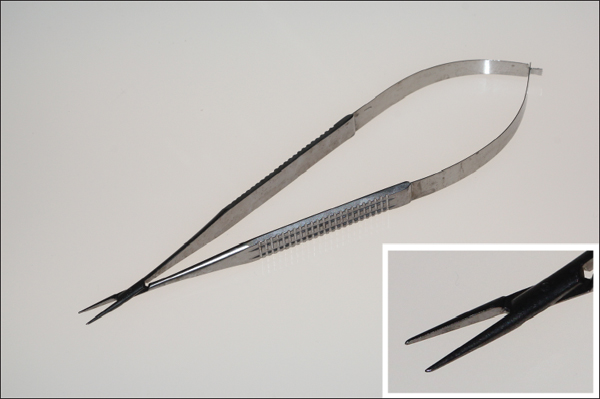
Micro Needle Holder
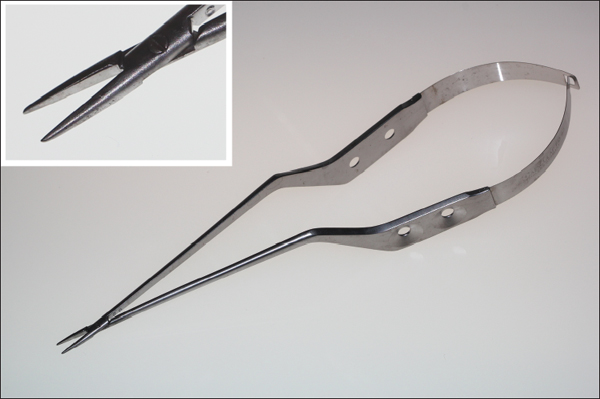
Yasargil Bayonet Needle Holder

Gerald Forceps without Teeth
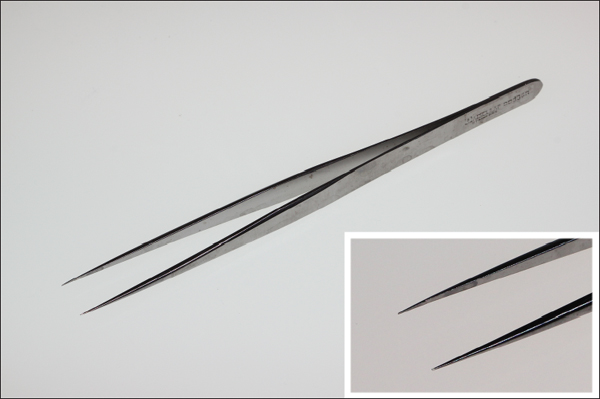
Micro Suture Forceps
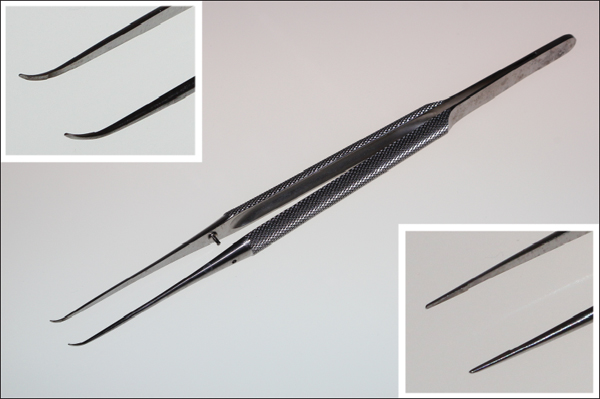
Round Body Forceps

Yasargil Bayonet Bipolar Forceps

Yasargil Bipolar Forceps Straight
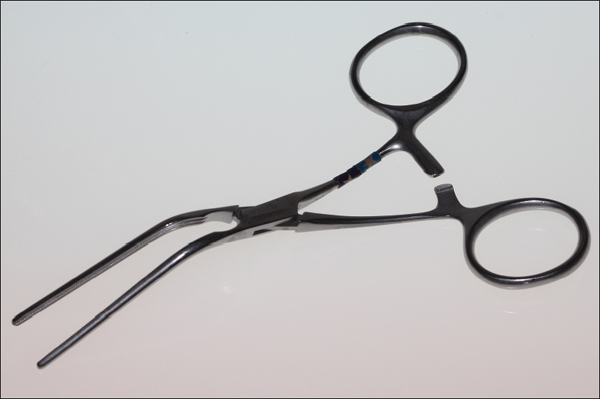
Cooley Clamp
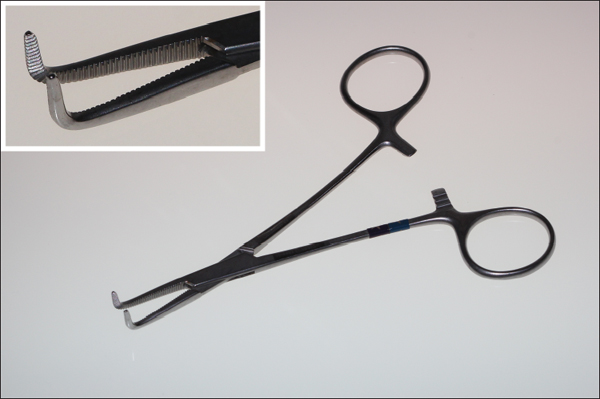
Mixter Right Angle Clamp
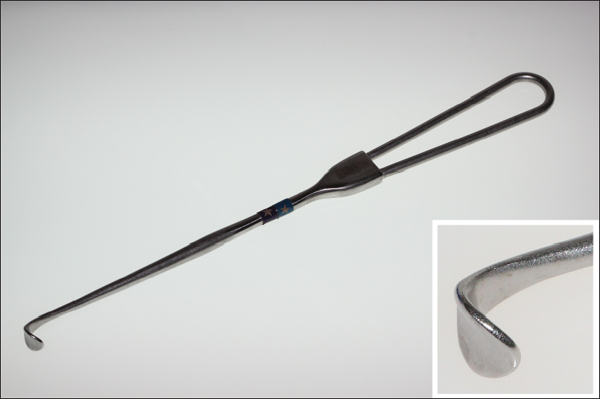
Cushing Vein Retractor

Frazier Dural Retractor
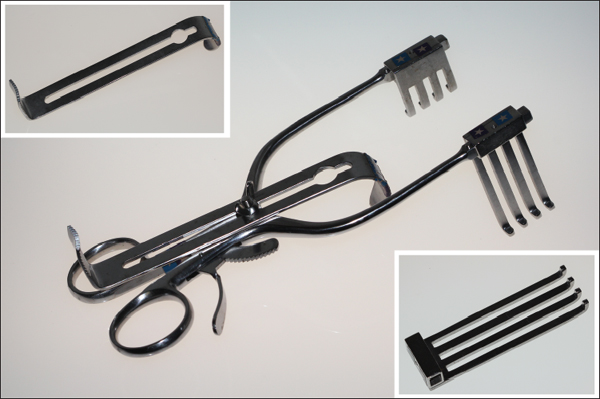
Henly Retractor
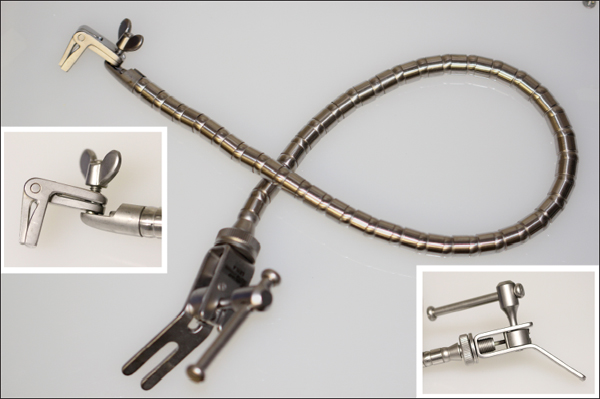
Leyla-Yasargil Retractor Arm
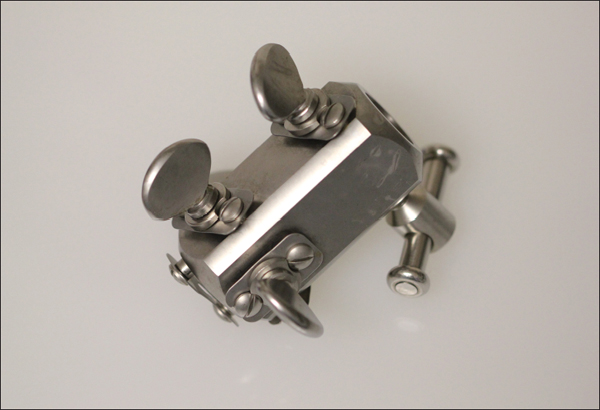
Yasargil Box Connector
< div class='tao-gold-member'>
Basic Microsurgical/Microvascular/Skull Base Instrumentation
Only gold members can continue reading. Log In or Register to continue

Full access? Get Clinical Tree








